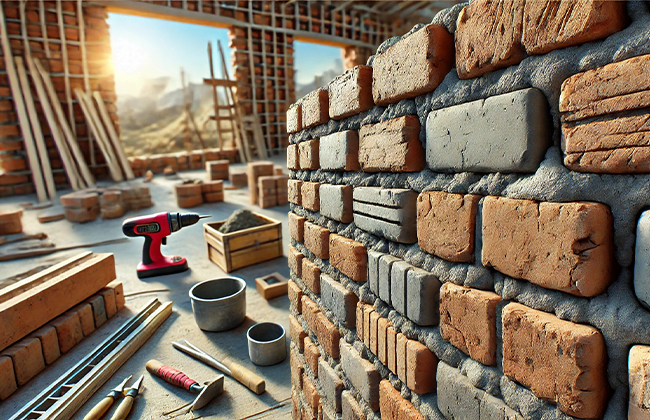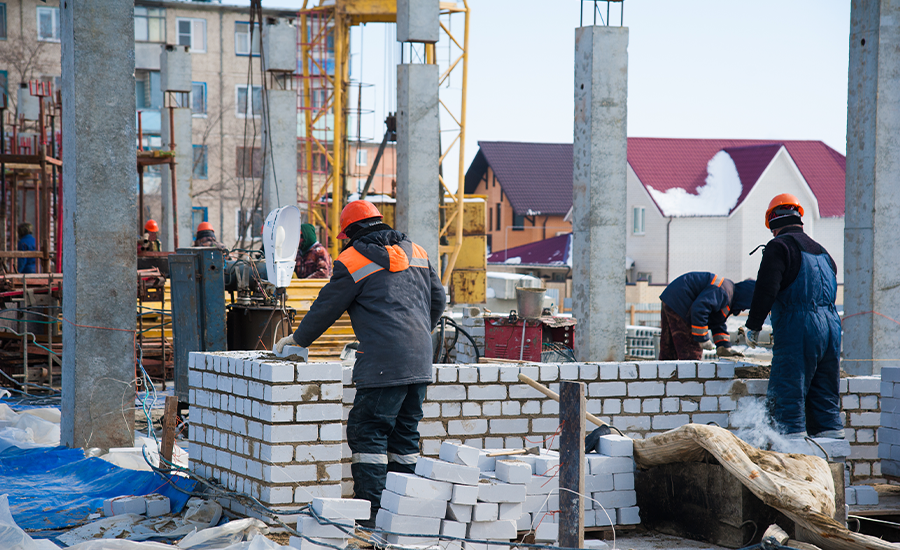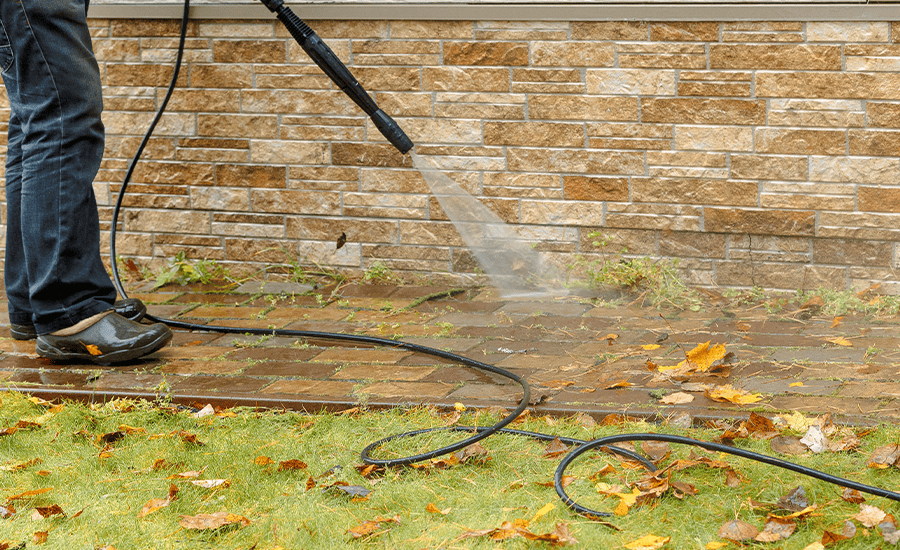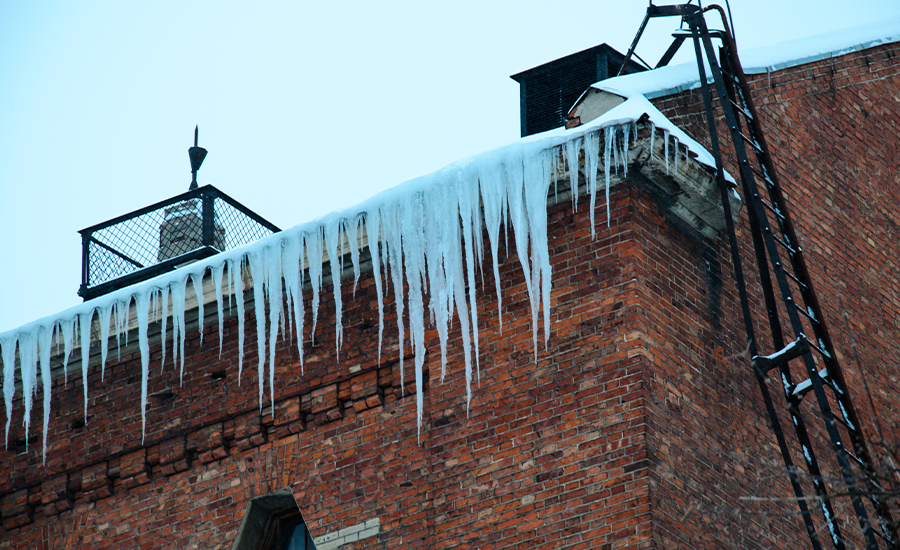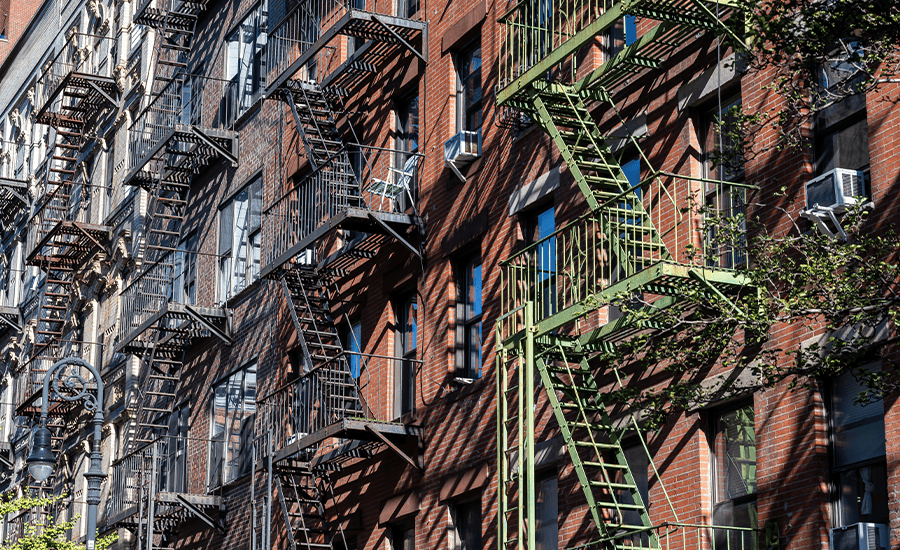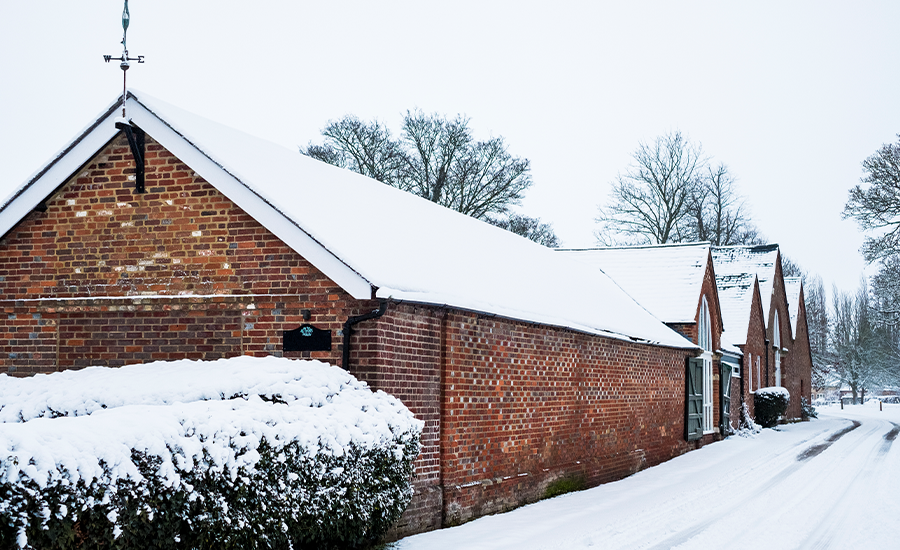Mortar joints in brickwork are fundamental to the construction and longevity of masonry structures. They not only bind bricks together but also contribute significantly to the structural stability and aesthetic quality of buildings. Understanding the correct use and maintenance of mortar joints in brickwork is crucial for any construction project aiming for durability and weather resistance.
What Are Mortar Joints in Brickwork?
Mortar joints are the spaces between bricks that are filled with mortar, which is a special kind of bonding material. Think of them as the glue that holds all the bricks together in a wall. These joints do more than just stick bricks together; they distribute the weight evenly across the wall, making it more stable and sturdy. They also play a big role in keeping the wall looking nice and neat, adding to the visual appeal of any building. By filling in the gaps, they prevent water and moisture from seeping through, which can cause damage over time. So, they’re not only crucial for keeping the structure strong but also for making sure it stays beautiful and functional for years.
Key Types of Mortar Joints in Brickwork
Choosing the right type of mortar joint is crucial for both the durability and aesthetic of brickwork. Each joint type offers unique benefits, enhancing the structure’s functionality and visual appeal. Let’s delve into the three most common types to see how they impact the overall effectiveness of masonry work.
1. Concave Joint:
The concave joint is the go-to choice for many builders, especially in areas that see a lot of rain. It features a rounded, inward curve that effectively channels water away from the brick surface. This is crucial because it significantly boosts the wall’s resistance to water penetration. Imagine a mini gutter system within each joint, ensuring that water rolls off the wall rather than seeping into it. Not only does this prevent moisture-related damage, but it also maintains the strength of the wall over time. For homes, this type of joint is ideal as it combines practical functionality with a neat, polished look.
2. Struck Joint:
Next up is the struck joint, which is all about adding a decorative touch to the masonry while keeping water out. This joint is defined by its unique profile: the top edge of the mortar is pressed inward, and the bottom edge is kept flush with the brick’s surface. This design not only creates a distinct shadow line that adds depth to the appearance of the wall but also serves a functional purpose. The inward slope of the upper edge helps to direct water down and away from the wall, much like a small awning over a window. It’s a fantastic choice if you’re looking to enhance the aesthetic value of your building without compromising on protection.
3. Butt Joint:
Lastly, we have the butt joint, often chosen for its sleek and modern appearance. This joint involves spreading the mortar flush with the brick face, resulting in a smooth and uniform surface across the entire wall. The seamless look is highly appealing for contemporary designs where clean lines and flat surfaces are prioritized. However, while it scores high on looks, it doesn’t perform as well when it comes to water resistance. Without any grooves or indentations to direct water away, the butt joint can be more prone to water ingress, especially in harsh weather conditions. It’s beautiful, no doubt, but it might require more maintenance to keep the wall in top shape.
Each of these joints has its specific advantages, whether it’s enhancing durability, improving water resistance, or boosting the visual appeal of the brickwork. Choosing the right type of mortar joint can make a significant difference in the longevity and appearance of your structure. So, it’s important to consider both the aesthetic and functional needs of your project when deciding which mortar joint to use.

Choosing the Right Mortar
Picking the right type of mortar for your brickwork isn’t just about matching colors or textures—it’s about ensuring your building stays strong and looks great for years to come. The type of mortar you choose can really make a difference in how well your brick structure holds up against weather, wear, and time. Let’s break down what you need to consider to make the best choice.
Assessing the Location
Where your building is located is super important. If you’re in a place that gets lots of rain or extreme temperatures, you’ll need a mortar that can handle moisture and thermal expansion without cracking. For example, areas with freeze-thaw conditions require a mortar with good flexibility and water resistance to prevent damage over the seasons.
Understanding Brick Type
Not all bricks are the same. Some are denser, some are more porous, and they all react differently to the environment and the mortar that binds them. For instance, softer bricks absorb more moisture and therefore need a mortar that can manage moisture effectively. Using the wrong type of mortar with a particular brick can lead to faster deterioration of both the bricks and the joints.
Meeting Structural Requirements
The structural demands of your building also dictate the type of mortar you should use. For buildings that bear heavy loads or are structurally complex, a stronger mortar might be necessary to ensure everything stays in place safely. This could mean opting for a mortar with a higher cement content, which offers more strength but less flexibility.
Types of Mortar to Consider
- Type N: A general-purpose mortar with good balance of flexibility and strength. It’s great for exterior walls and above-ground projects where severe weather isn’t a constant threat.
- Type S: Known for its high strength and excellent bonding properties, Type S is perfect for foundations, retaining walls, and other areas where the ground might shift or settle.
- Type M: The strongest option available, ideal for use in foundations, below-grade applications, and other load-bearing walls.
- Type O: Offers lower strength but greater flexibility, suitable for non-load-bearing walls and restoration of historic buildings where matching the original mortar is crucial.
Choosing the right mortar involves balancing many factors to match the specific needs of your project. By considering the environment, the type of bricks, and the structural demands, you can select a mortar that not only holds your bricks together but also contributes to the longevity and beauty of your building. Always consult with a masonry expert or a structural engineer to make the best choice for your particular situation.
Installation Techniques
When it comes to building with bricks, the way you install those mortar joints is just as important as the materials you choose. Proper installation is crucial for ensuring that your brickwork is strong, durable, and looks great. Let’s walk through the key steps needed to get those mortar joints just right.
1. Mixing the Mortar
First things first, you need to mix your mortar. This isn’t just about stirring together some cement, sand, lime, and water. You’ve got to get the consistency right—think about the texture of creamy peanut butter. If it’s too dry, it won’t bind well; too wet, and it’ll be weak. Getting this step right means your mortar will have the perfect balance of strength and flexibility to hold your bricks in place for years.
2. Applying the Mortar
Now, with your mortar mixed, it’s time to apply it. This step needs a steady hand and a keen eye. Lay down an even layer of mortar along the area where you’ll place your bricks. Use a trowel to spread it evenly, making sure to cover the surface completely but not excessively. The goal here is to create a uniform bed for the bricks to sit on, which helps distribute the weight evenly across the structure.
3. Setting the Bricks
With the mortar applied, start setting your bricks. Place each brick gently but firmly into the mortar, pressing down just enough to squeeze a little mortar out the sides. This ensures there are no gaps or air pockets, which could weaken the wall. As you lay each brick, use a level to check that they’re straight and aligned. This isn’t just for looks; it’s essential for the structural integrity of the wall.
4. Compacting the Joints
After the bricks are laid, it’s time to focus on the joints themselves. Use a jointing tool to press and seal the mortar between each brick. This compacts the mortar, making sure it’s tightly packed and has a smooth, uniform finish. Proper compaction helps prevent water from seeping into the joints and provides additional strength to the masonry.
5. Curing the Mortar
Finally, once the mortar is in place, it needs to cure. Curing isn’t just about letting the mortar dry; it’s about allowing it to slowly set and develop maximum strength. Keep the newly laid brickwork damp for several days if possible, especially in hot or windy conditions. This can involve covering the bricks with a damp cloth or periodically misting them with water. Proper curing ensures the mortar achieves its full strength and adheres well, providing lasting stability to the brickwork.
Each of these steps is vital to ensure that your brickwork is not only aesthetically pleasing but also structurally sound. Skipping any step or rushing through the process can lead to problems down the line, like cracking, water damage, or even structural failure. So, take your time, pay attention to the details, and you’ll end up with brickwork that’s as robust as it is beautiful.
Maintenance and Repair
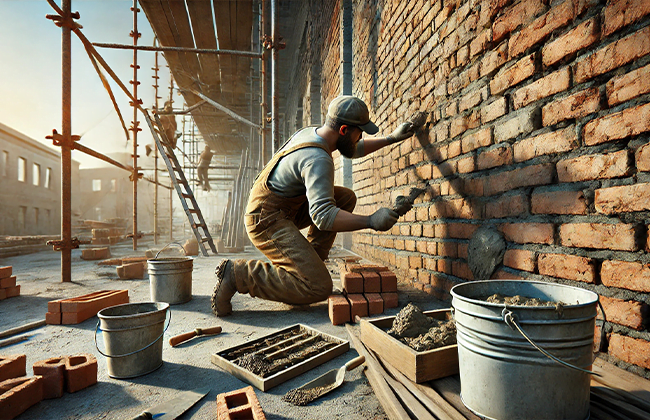
Keeping your brickwork in top shape isn’t just about aesthetics; it’s also about preserving the integrity and longevity of your structure. Regular maintenance is key to avoiding costly repairs down the line. Let’s go through some practical tips on how to keep your brickwork looking great and standing strong.
1. Regular Inspections
First off, make it a habit to inspect your brickwork regularly. You should look for any signs of wear, such as cracks in the mortar or erosion. These can be subtle at first, so catching them early is crucial. Inspections should be more frequent after severe weather events like heavy rains or freeze-thaw cycles, as these are prime times for damage to occur.
2. Cleaning the Brickwork
Keeping the brickwork clean can also prevent many issues. Dirt, moss, and other debris can retain moisture against the bricks and mortar, leading to deterioration over time. Gently clean your brickwork with a soft brush and, if necessary, a mild cleaning solution. Avoid harsh chemicals and high-pressure washers, as these can damage the mortar and the bricks themselves.
3. Repointing Mortar Joints
If you notice that the mortar has started to crumble or pull away from the bricks, it might be time for repointing. Repointing involves removing the damaged mortar and replacing it with fresh mortar. This not only restores the look of your brickwork but also its structural stability. It’s important to match the new mortar to the existing mortar in color, composition, and consistency for the best results.
4. Sealing the Brickwork
Consider sealing the brickwork if you live in an area with harsh weather conditions. A breathable sealant can help protect against moisture penetration without trapping existing moisture inside the bricks, which can lead to damage. However, make sure to consult a professional to choose the right type of sealant that works with your specific type of brick and mortar.
5. Addressing Efflorescence
Efflorescence, the white powdery substance that sometimes appears on bricks, is caused by salt deposits left behind from water evaporation. While it’s mostly a cosmetic issue, it can indicate moisture problems. You can clean off efflorescence with a stiff brush and water, but be sure to address any underlying moisture issues to prevent it from coming back.
6. Professional Assessments
Sometimes, it’s best to call in a professional, especially if you spot significant damage or if the DIY approach feels overwhelming. A masonry expert can provide a thorough assessment and recommend the best course of action, ensuring that repairs are done safely and effectively.
By following these tips, you can keep your brickwork in excellent condition, protecting your home from potential damage and maintaining its beauty and structural integrity. Remember, taking care of your brickwork is an ongoing process, but with regular attention, you can avoid major repairs and enjoy the lasting charm and durability of your brick structures.
Advantages of Properly Executed Mortar Joints
When mortar joints are done right, they do more than just hold bricks together; they become a crucial component in the overall performance and longevity of a building. Let’s talk about how well-executed mortar joints can significantly boost a building’s durability, aesthetic appeal, and energy efficiency.
Enhanced Durability
One of the biggest benefits of properly executed mortar joints is the increased durability they provide. Good mortar joints act like a strong glue, holding bricks firmly in place and distributing loads evenly across the wall. This prevents structural weaknesses that can lead to cracks and collapses over time. Moreover, good joints help shield the interior of the walls from the elements, reducing the risk of moisture seeping in and causing damage like mold or weakening of the brick itself.
Improved Aesthetic Value
There’s no denying that a well-built brick wall with clean, consistent mortar joints looks fantastic. Properly executed joints contribute to a polished and professional appearance, enhancing the visual appeal of any building. Whether it’s the neat lines of a concave joint or the striking shadow effects of a struck joint, good mortar work ensures that the bricks look their best. This not only makes the property more attractive but can also increase its market value.
Increased Energy Efficiency
Mortar joints play a surprisingly big role in a building’s energy efficiency. When done correctly, these joints seal the spaces between bricks, minimizing gaps and reducing air leakage. This helps maintain a stable temperature inside, whether it’s keeping the cold out during winter or the cool in during summer. As a result, there’s less need to crank up the heating or air conditioning, which can lead to significant energy savings over time.
Reduced Maintenance and Repair Costs
Well-executed mortar joints mean fewer problems down the road, saving you time, money, and hassle in maintenance and repairs. With robust joints keeping the structure secure, you’re less likely to need frequent touch-ups or major fixes. This can be a huge advantage, especially in older buildings where the cost and effort of constant repairs can add up.
Protection Against Environmental Stressors
Finally, good mortar joints offer better protection against environmental stressors such as wind, rain, and even seismic activity. They provide a solid, continuous barrier that can withstand external pressures, safeguarding the building’s structural integrity. This is particularly important in areas prone to extreme weather or earthquakes.
In short, the care taken in preparing and applying mortar in your brickwork can have a profound impact on the building’s overall health and functionality. From enhancing its look to boosting its energy efficiency and structural durability, the benefits of properly executed mortar joints are clear. So, it’s definitely worth paying attention to this crucial aspect of building construction to reap these long-term advantages.

Common Mistakes to Avoid
When working on brickwork, ensuring that everything goes smoothly can sometimes be a bit of a balancing act. There are several common pitfalls that, if not avoided, can compromise the integrity and appearance of your structure. Let’s take a look at some of these mistakes so you can steer clear of them in your projects.
1. Using Mismatched Mortar
One of the first traps many builders fall into is using mismatched mortar. This doesn’t just mean color—though aesthetics are important—it also includes the type and mix of the mortar. Different projects require different mortar strengths and flexibilities, depending on environmental conditions and the load the structure will bear. Using the wrong type can weaken your brickwork. Always double-check the specifications for your mortar and make sure it’s suited to your bricks and environmental conditions.
2. Overworking the Mortar
Mortar isn’t like dough; you don’t want to overwork it. Once it’s mixed, overmanipulating it can lead to a decrease in its binding properties. This happens because overworking the mortar can drive out the air that’s been entrained to help the mortar resist freeze-thaw cycles. It’s a bit like overmixing cake batter—the consistency changes and not for the better. Mix until it’s just right, and then let it do its job.
3. Improper Joint Finishing
How you finish your joints can hugely affect the longevity and effectiveness of your brickwork. Rushing this process or doing it haphazardly can lead to weak points that allow water ingress or create an uneven load distribution. Be meticulous with your joint finishing—make sure that each joint is compacted properly and that the finishing style is consistent across your project. This not only improves the structure’s strength but also its overall appearance.
4. Skipping Proper Curing
Mortar needs time to reach its full strength, and this happens during the curing process. Skipping this or not allowing enough time for the mortar to cure properly can result in weaker joints that might crack or crumble prematurely. Depending on the type of mortar, curing can take several days, and during this time, the mortar should be kept moist and protected from extreme temperatures.
5. Neglecting Environmental Factors
Lastly, always consider the environment in which the brickwork will exist. Factors like high humidity, extreme temperatures, and exposure to salt can all dictate specific needs for mortar and brick selection. For instance, areas with heavy rain or freeze-thaw cycles might require water-resistant mortar with additives that improve elasticity.
By being aware of these common mistakes and taking steps to avoid them, you ensure that your brickwork remains strong, functional, and beautiful for years to come. Remember, good brickwork is not just about laying bricks—it’s about understanding and respecting the materials and processes that make your structure stand the test of time.
Conclusion:
Proper maintenance of mortar joints in brickwork is crucial for preserving the strength and beauty of your building. If you’re seeking professional expertise to manage or repair mortar joints in brickwork, feel free to reach out at (+1) 917-355-8556. Our skilled contractors are ready to ensure your masonry remains in excellent condition, protecting your investment well into the future.
FAQs:
Q: What are the benefits of properly maintained mortar joints in brickwork?
A: Proper maintenance of mortar joints in brickwork enhances the structure’s durability and aesthetic appeal. Regularly checking and fixing these joints helps prevent moisture penetration and structural damage, ensuring long-lasting stability.
Q: How often should mortar joints in brickwork be inspected?
A: Mortar joints in brickwork should be inspected at least once a year to ensure they are free from damage such as cracks or erosion. More frequent inspections may be necessary in areas experiencing severe weather conditions.
Q: What are common problems associated with mortar joints in brickwork?
A: Common problems with mortar joints in brickwork include cracking, erosion, and moisture infiltration. These issues can compromise the structural integrity of the wall and lead to costly repairs if not addressed promptly.
Q: Can I replace damaged mortar joints in brickwork myself?
A: While minor repairs to mortar joints in brickwork can be a DIY project, it’s crucial to understand the correct techniques and materials. For extensive damage, consulting a professional is advised to ensure repairs are properly executed.
Q: What materials are best for repairing mortar joints in brickwork?
A: For repairing mortar joints in brickwork, use a mortar mix that matches the existing mortar in strength, color, and composition. This helps maintain the integrity and appearance of the brickwork while ensuring compatibility and durability.
Q: What is the standard mortar joint between bricks?
A: The standard mortar joint between bricks typically measures between 1/4 inch to 3/8 inch. This size ensures stability and aesthetic appeal in most brick constructions.
Q: How do you repair mortar joints between bricks?
A: To repair mortar joints, old mortar is removed to a depth of about twice the width of the joint, then fresh mortar is applied. This process, known as repointing, restores the stability and appearance of the brickwork.
Q: What are the joints in brickwork called?
A: Joints in brickwork are primarily referred to as bed joints, perpend joints, head joints, and collar joints. Each type serves a specific structural and aesthetic function in masonry construction.
Q: Types of Brick Mortar Joints
A: Common types of brick mortar joints include concave, flush, raked, struck, and weathered. Each type offers different visual effects and degrees of moisture resistance.
Q: What is the best mortar joint for brick?
A: The concave joint is widely regarded as the best mortar joint for brick due to its ability to effectively shed water and enhance the durability of the wall.
Q: How thick should mortar be between bricks?
A: Mortar joints between bricks should typically be about 3/8 inch thick. This thickness helps ensure both the structural integrity and the aesthetic uniformity of the brickwork.


